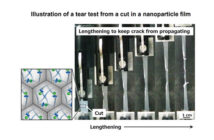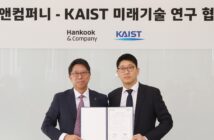Through joint research, SRI claims to have established the world’s first technology that is capable of measuring the structure and chemical state of matter at nanoscale due to the active utilization of the powerful SPring-8 synchrotron radiation facility.
The company worked in collaboration with Professor Yukio Takahashi of the International Center for Synchrotron Radiation Innovation Smart at the Tohoku University in Japan, Riken and Yusuke Tamenori, director of the Japan Synchrotron Radiation Research Institute.
By using new tender x-ray nanoscope technology, SRI and its partners have succeeded in visualizing the sulfur compounds used in lithium-sulfur batteries in more detail than anyone has previously achieved. Partners of the project believe the technology can also be applied to tire research programs and could result in the production of tires with an even higher level of performance.
As a major raw material used in the production of tires, sulfur has a significant influence on a product’s longevity and performance levels. The manufacturer will apply knowledge learned through tire research and other fields to the project.
Visualization and the measuring of sulfur compounds at a nanoscale was made possible through the research group developing the claimed world-first tender x-ray nanoscope, which uses SPring-8. By applying the technology, the group was able to use coherent tender x-rays.
The research team plans to use the 3GeV-class Synchrotron Radiation Facility, known as NanoTerasu, for measurements of lithium-sulfur batteries under charge-discharge cycling, as part of the group’s efforts to realize practical application of the technology in the field of materials development.
SRI will also use this technology for its tire research activities, which include a more in-depth look at the analysis of the cross-link structure of the chemical bonds between rubber and sulfur. By doing so, SRI seeks to contribute to the development of performance sustaining technology, a key technical development theme of the company’s Smart Tyre Concept.

Image A (coherent x-ray diffraction image) is produced by irradiating sulfur compounds with a coherent tender x-ray beam. Phase retrieval calculations are then used to generate Image B (x-ray absorption image) and image C (x-ray phase image). The process is then repeated at varying x-ray energies. The visualization of the chemical state of the sulfur compounds is achieved through the combination of around 30 of these images




